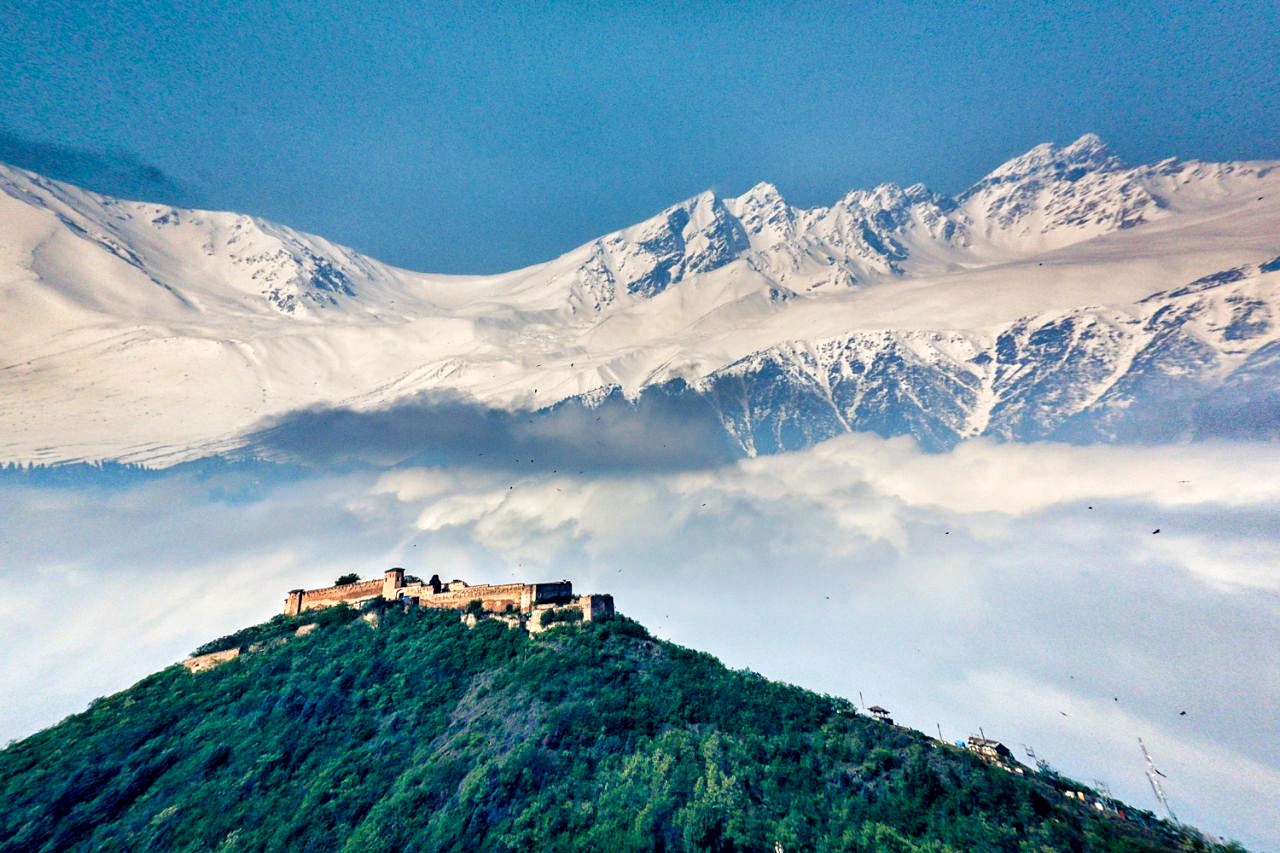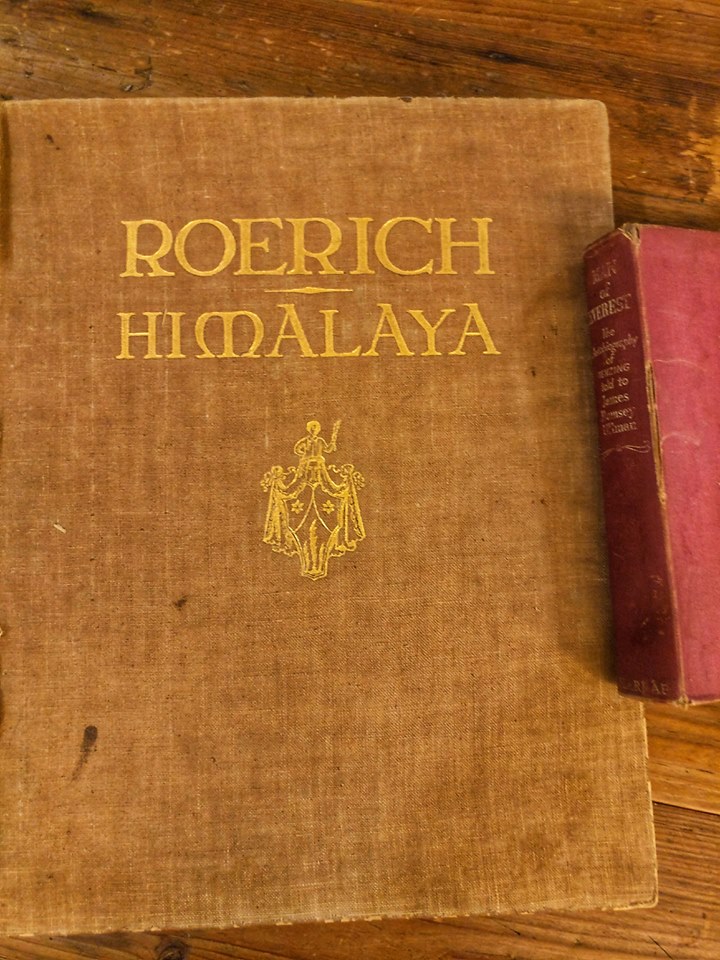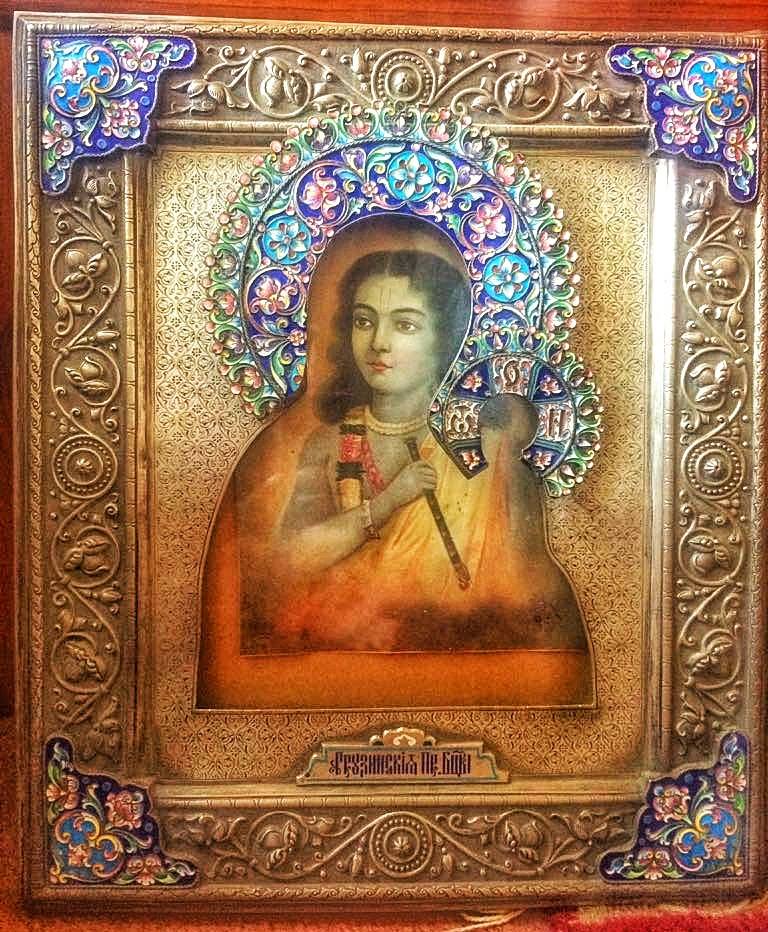The Bulbulik Music School in Gojal Valley, Gilgit is making efforts to revive musical traditions that are on the verge of extinction. Run by Gulmit Educational and Social Welfare Society, Bubulik is named after nightingales which are frequently mentioned in Persian and Urdu poetry. The school takes its name from Wakhi folk culture known as Bulbulik. Shepherds of lowland areas sing while they travel to the highlands to send messages back home. Taken from the Dawn
The Hari Parbat Fort, Srinagar, Kashmir
The Hari Parbat is the only surviving Fort in the Kashmir region of the state of Jammu and Kashmir. It stands over a hill also known as the Koh-I-Maraan and originally was the site of a Fort built by Emperor Akbar. He had also built a large fortification Wall at the base of the Hill parts of which survive till today.
Humans of Himalayas : The Khampa
The Khampa as the people of Kham are called were the most warlike of all the Tibetan people. The Khampa Horsemen were greatly feared and their horses were in great demand. Infact some Khampas kept on fighting the Chinese well into the 70s. They were called the Buddha's warriors. They were aremed by the CIA and gave resistance to the Chinese in Tibet through their bases based in the Mustang region in Nepal.
The Horsemen of the Pir Panjals
The mysterious Warrior Horsemen of the Pir Panjals. These group of Horsemen sculptures exist at a number of places in the Pir Panjals and till today no one has been able to explain why these were built or who built them or even when they were built. A true Himalayan heritage.
The Monster of the Snows : Rolba 1500
The Ultimate Snow Cutting Machine, the Rolba 500, widely used at Airports world wide to removes snows. It is also effectively used to open the Himalayan Passes like Zoji La and Rohtang. A fine pieces of Swiss Engineering.
Humans of Himalayas : The Kalash
The Kalash is a name given to a Group of people who exist in three isolated Valleys of Chitral in the Khyber Pakhtunkhwa region of Pakistan. As of today Kalash people include people who follow Islam and another Group which still practices its ancient religion. As on the present day their numbers of those following the original religion are in a few thousands and they have been under threat since a long time though lately due to Government intervention they have been relatively free to go on with their lives and traditions as they have for thousands of years.
Zanskar : The Valley of Copper
Zanskar has an area exceeding 7000 sq km and a population estimated to be between 18000 to 20000. It is located bang in the middle of the Great Himalayas which separate it from Kishtwar and Lahaul in the South. In the East it touches Tibet almost and in the North is Ladakh and to the East is what used to be Baltistan but now better known as the Kargil area. Zanskar gets its name from the Tibetan word for Copper "Zang" and Valley. So probably it was because of the Copper deposits it was called so. And the name stuck.
The Dagwan Nallah, Dachigam National Park
The Dagwan Nallah is a stream that flows through the Dachigam National Park. At the edge of the Park this little piece of engineering diverts some of the water from the Dagwan Nallah / River into the Sarband Lake, that traditionally was used to supply drinking water to Srinagar city. This system was set up way back in 1906. And for many years the water was just supplied raw so pristine was the water.
Roerich Himalaya
And I'm a happy man today. As I just received my copy of the original limited edition (No.217 of 500 copies) Roerich Himalaya published in 1926. It contains writings and lithographs with 24 Colorplates and 78 Halftones of the paintings by Nicholas Roerich.
Thakur of Gondla
Roerich did a series of paintings on Lahul, which included a painting on the Rohtang Pass, the Chandra River, Koksar and Gundhla. I have come across three different paintings of his on Gundhla. Maybe the Tower of Gundhla was the thing that excited him. In all three paintings on Gundhla the Tower figures prominently. I'm posting two of his paintings from Gundhla, a part of the Lahul series. As per his own writings Roerich was astounded on seeing the ancient castle of the Thakur of Gundla. The Gondhla Fort is the only existing Fort in Lahaul today and is under ASI protection now.
Dusshera in Quetta
A Classical Image of a Dusshera Celebration in Quetta in the pre-independence era.
AMS : Effects of Altitude
Th effects that a sudden exposure to a higher altitude and the effects of AMS, or Acute Mountain Sickness as experience on the Jade Dragon Snow Mountain in Lijiang in North Western Yunnan in the Hengduan Mountain Range.
Apple Grafters
The Apple Grafters of the Apple Country in Kotkhai and else where in Apple growing regions are highly sought after men who specialize in grafting any Apple variety on any Apple tree. Their Story.
When East met West
When East met West. A Lord Krishna picture in a Christian frame made in Russia. An import from Yarkand !
Annapurna and Dhaulagiri
Dhaulagiri on the left and the Annapurna Massif on the right.
Taken from a flight headed East. October 2017.
Srinagar Old Town : Walkhrough
A walk around the old part of Srinagar and across the many Monuments and places of Worship spread around the Old Town including the Khanqah-e-Moula, Pathar Masjid, Tomb of Zainulabidin’s Mother, Chatti Padshahi Gurudwara, Sharika Temple and the Hazratbal Shrine.
Altai Himalayas
Altai Himalaya is a great Book by Nikolai Roerich about his Journey through high Asia.
Himalayan Tales : The Whiteys
The Inglorious Bastards of the Pir Panjals Part II : Whitey and Mamooli
The Uri Memorial to Nand Singh VC MVC : Forgotten Hero
The mostly untold story of Nand Singh, a soldier in the Indian Army who was decorated with a Victoria Cross in the Second World War. He saw action again in the Indo pak War over Kashmir in 1948 and provided a heroic defense of Uri for which he was decorated with the Mahavir Chakra.
Buzkashi
Buzkashi, which literally means"goat pulling" in Persian, probably originated in the wilds of Central Asia in the days of the Central Asian Horse empires. Its is still played in that nursery of the feared Mongols, the fore bearers of all the Turkic tribes, in the Altai Mountains of Mongolia. It is said that the Great Khan himself, Genghis Khan made this game up as an exercise to strengthen the legs of his soldiers for war.




















